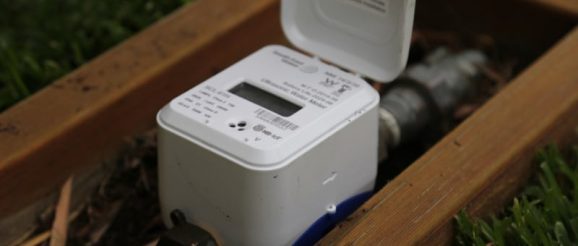An innovation leap for network leak detection – Utility Magazine

Water utilities worldwide have been struggling with the financial and conservation costs caused by Non-Revenue Water (NRW) losses. The level of loss in some parts of the world can reach 50 per cent, and in Australia, it averages around 10 per cent. NRW loss is not only a drain on a water authority’s finances, it is also a waste of a precious resource.
Immense volumes of drinking water are lost through leakage and a large amount of energy is expended to supply, treat and pump water throughout the network. A reduction in water leakage would not only save water, it would also help water authorities meet their carbon footprint commitments.
South East Water General Manager Digital Utilities, Andrew Forster-Knight, said, “Although Australian utilities experience a lower level of non revenue water losses on a global scale, there are huge benefits if we can further reduce even a small percentage of non-revenue water.”
One of the biggest challenges is the ability to solve water loss at scale on aging infrastructure, while delivering permanent operational and cost effective results. In response, the industry is transitioning to digital solutions, however the journey has not been easy.
Network leak detection to date has been managed by water authorities through various complementing approaches, but most are manually operated, time-intensive, and do not deliver permanent network results.
Other solutions can pinpoint leaks but are often not cost-effective to deploy across an entire network. To reduce costly processes and ensure always-on detection at scale there was a need for a new, more advanced solution.
Sensors embedded into digital meters
Melbourne-based water utility, South East Water, prioritised network leak detection and reduction in its digital utility program. Following research and prototyping, South East Water developed a leak detection sensor that is automated, economical at scale and simple to integrate with water organisations’ systems.
In an industry-first move, Sotto® sensors are miniaturised and embedded into digital meters, making them seamless to deploy, and simple to utilise the meters’ battery and communication network. South East Water, through its commercial subsidiary Iota, partnered with Landis+Gyr to integrate Sotto® sensors into the digital water meters they offer in Australia and other territories.
The partnership led to a breakthrough for the industry – combining a sensor that monitors main and service lines continuously with the digital meter that targets customer side leaks. Landis+Gyr’s David Maclean said utilities are starting to realise the benefits of digitisation, which Landis+Gyr has experienced worldwide.
“From our current deployments across Australia and New Zealand, we are also witnessing a transition from traditional stand-alone leak detection solutions to innovative, cost-effective technologies such as the Sotto® sensor, small enough to be integrated into meters and deployed across large parts of the network, resulting in a continuous monitoring of network leaks,” Mr Maclean said.
Detecting previously undetectable leaks
A recent South East Water pilot confirmed that leaks could be detected days, weeks and even months before they emerge, while a single desktop view could help to identify and prioritise leaks daily.
An independent study confirmed that a one percent saving on NRW can be achieved by deploying Sotto® network leak detection sensors within the South East Water. The saving for South East Water, equating to 1,630ML per/annum, is realised through detecting previously undetectable leaks and early detection of existing leaks.
The trial encompassed 5,100 sensors in South East Water’s Port Melbourne network. “The year ahead is exciting for us as we continue to scale out the IoT digital reading devices across our customer and network assets, and we have only just scratched the surface regarding the insights,” Mr Forster-Knight said.
South East Water meanwhile scaled up to 14,000 Sotto® integrated digital meters, and further deployments are underway. The future vision sees South East Water with always-on network leak visibility and optimised operations that ensure repairs are performed with reduced customer disruption.
This sponsored editorial is brought to you by Iota. For further information, please visit iotaservices.com.au.
